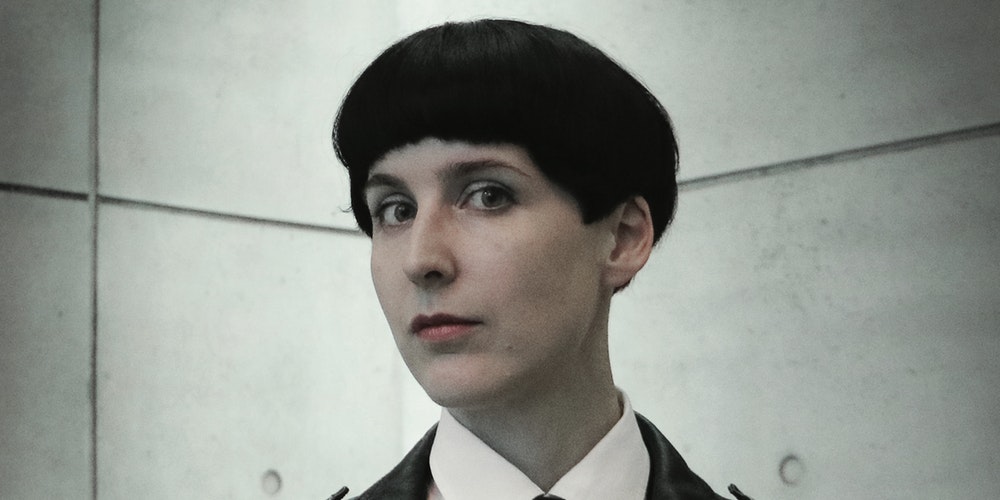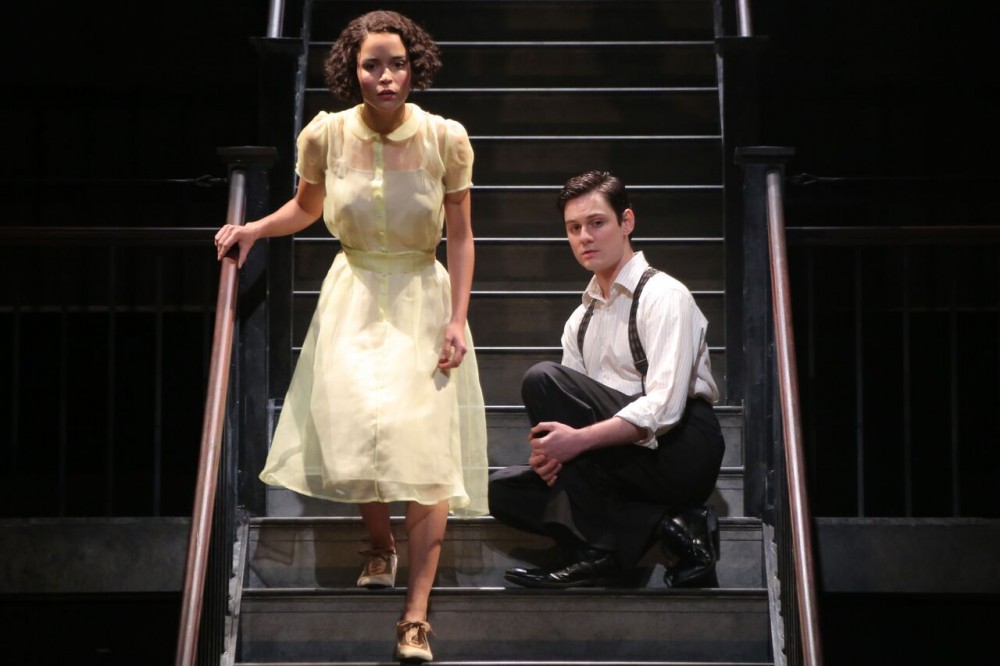Karin Tidbeck’s collection Jagannath strings together a chain of eerie vignettes where the fantastic creeps in from a place just outside your peripheral vision, subtly seeping into a reality you thought you recognized. Tidbeck translated these herself from her native Swedish, and the end result is a clear, succinct prose style that makes for a crisp blank canvas so that the strangeness of her plots and ideas stand out against a clean background. These stories are quick and varied, though Tidbeck deftly navigates each shift between narratives, keeping the reader hooked with swift, absorbing plots and empathetic, human characters. They often arrive at their endings unresolved but satisfying, and rarely ever in a place you thought they would take you. —Lauren Kane
I read a draft of Rachel Lyon’s debut novel Self-Portrait with Boy in 2014. The finished book, published this week by Scribner, has evolved and changed, but the essentials were in place from the beginning. The story is told in crisp, clicking, photographic prose, and has the narrative momentum of a thriller, though the question isn’t what tragedy will befall the main character, but what that character will do with a tragedy once it’s happened—and, most interestingly, happened to someone else. The story is set in DUMBO in the ‘80s. Pipes leak. Artists squat. Developers are only just beginning to arrive. The central character is the struggling photographer, Lu Rile. Rile happens to be taking a self-portrait in her apartment as a neighbor’s child falls to his death outside her window. She catches the moment, and ends up with the image of a lifetime. Now she must decide what to do with it. She harbors the secret as she comforts the child’s mother. They become increasingly close, but all the while, Rile is developing the film in her apartment right downstairs, in her makeshift darkroom, adjusting its size, trying out different versions—Lyon makes this process especially thrilling—creating the work of art which she knows could lift her from obscurity into the amoral splendor of the ‘80s art world. I’ve been in love with this novel for four years now. I am so excited to see it coming out into the world. —Brent Katz
At a recent dinner party, the subject of underrated novels arose. Molly Fischer and Alexandra Schwartz nominated Penelope Fitzgerald’s The Blue Flower, and, previously unaware of it, I picked it up the next day. Fitzgerald published her first book at the age fifty-eight, and this one, which is considered her masterpiece, at the age of seventy-eight. It is, as Molly and Alex promised, “unlike anything else you’ve ever read.” Technically historical fiction, it traces the early life of Friedrich von Hardenberg, or Fritz, who would one day go on to become the poet Novalis. In the 1790s, however, he is still dutifully pursuing his father’s dream that he become a salt mine inspector. To everyone’s mystification and chagrin, Fritz falls madly and inexplicably in love with twelve-year-old Sophie, who, it is agreed, is a) too young, b) relatively plain (though Fritz insists she looks just like Raphael’s self-portrait of himself at twenty-five) and c) exceedingly simple. When Fritz first has his coup de foudre, Sophie is tapping on a window and intoning “Snow. Snow,” in the hopes that it will. But Fritz, who can scarcely carry on a conversation without mentioning that all of existence is one, is entranced (and frustrated) by Sophie’s recalcitrant dullness to the point of calling her “his Philosophy.” At one point, Fritz commissions her portrait, convinced it will reveal her essence. The painter locks himself in an upstairs bedroom and refuses to emerge. Later, he tells Friz, “In every created thing, whether it is alive or whether it is what we usually call inanimate, there is an attempt to communicate, even among the totally silent. There is a question being asked, a different question for every entity, which for the most part will never be put into words, even by those who can speak. (…) Best for the painter once having looked to shut his eyes (…) so that he may hear it more distinctly. (…) I could not hear her question, and so I could not paint.” Fritz’s question, however is clear: he keeps reading people the beginning of his story, in which a young man cannot sleep out of longing for “the blue flower,” mentioned once by a passing stranger. “What is the meaning of the blue flower?” Fritz asks after each reading. No one can answer him, not even the novel itself, but the desire to understand keeps you up at night. —Nadja Spiegelman
Good things that happened to me this week: Lady Bird, Call Me by Your Name, a big pretzel, the latest Radiohead album, the Lil Peep song “Star Shopping,” the really good dance song/scene from Call Me by Your Name, doing things with your parents, crying at the movies, the David Hockney exhibition at the Met, burgers in general. —Brian Ransom
One of the best parts of Quincy Jones’s interview in New York Magazine is the footnotes that pop up eagerly to the left of the text as you read. (Jones’s claim that Paul Allen can play the guitar like Jimi Hendrix, for example, is accompanied both by interviewer David Marchese’s incredulity and by a note describing Allen as a “Microsoft co-founder and multibillionaire” with a “collection of yachts and guitars to rival the world’s finest.”) Just as good as these footnotes are the articles that have appeared in the past day to further corroborate Jones’s incredible claims, with headlines like “Richard Pryor slept with Marlon Brando, Pryor’s widow confirms” (“It was the ’70s! … If you did enough cocaine, you’d [sleep with] a radiator and send it flowers in the morning.”) Third, of course, are Jones’s actual statements, which are unadorned and improbable. In the space of ten seconds, Jones pivots from Michael Jackson to the the pharmaceutical industry’s influence on the federal government to the zodiac sign of the interviewer (“Pisces,” Marchese says, to which Jones replies, “Me too. It’s a great sign”). The interview has spent the past few days bouncing around the internet and gathering commentary in its wake. Its comical frankness, aided by Marchese’s well-informed and well-phrased questions, brightened my entire week, just as Marchese’s similarly incredible interview with Erykah Badu did last month. —Eleanor Pritchett
There sometimes comes an episode in a TV series that renders unwavering your commitment to the series. Season 2, Episode 8 of The Leftovers, “International Assassin,” is just such an episode. The three-season HBO series that first aired in 2014 and ended last year, The Leftovers takes place, almost entirely, in a world seemingly just like our own. Season 2, Episode 8, however, takes place in some “other place.” Premised on a single moment when two percent of the world’s population suddenly disappeared (or, in the show’s parlance, as if to grant some mysterious agency, “departed”), the series takes its time in answering even the smallest questions and generally makes its characters and viewers dwell in anxious confusion. So, when Season 2, Episode 8 takes Kevin Garvey, the lead, to an “other place,” I was no more disoriented than usual. There is something even comforting about watching Kevin Garvey’s confusion in a place uncanny to him. The episode opens more questions than it answers, but it gets so weird that it is comforting. While the show (of course) will take its time in revealing when or whether Kevin will go back to this “other place,” I am unwaveringly determined to follow. —Claire Benoit
The other week, I used this space to pay homage to the playwright Adrienne Kennedy’s early work. Now, I’ll use it to applaud her latest: He Brought Her Heart Back in a Box. As I settled into my seat at the Polonsky Shakespeare Center—with Kennedy’s grandson behind me, John Guare a few rows in front—I felt as though I was to bear witness to great American theater. I was right. The play, no more than fifty minutes and directed by Evan Yionoulis, is a harrowing portrait of the Jim Crow era. It opens in Montefiore, Georgia, in the forties, where the love of two teenagers, Kay and Christopher, is doomed: she is of mixed race, he is white. A tragedy awaits. To borrow from Kennedy, the play comprises “two monologues”: for much of it, the two read letters to each other aloud and, as they do, recount their genealogies, channeling the ancestral voices of grandmothers and aunts, fathers and mothers. (Christopher fixates on his father and his Nazi admirers; Kay revisits the tales of her mother’s death: Was she murdered, her heart brought back in a box, or did she die by her own hand?) In true Kennedy fashion, the actors become vessels for a multitude of selves, of histories and myths, spilling forth from beginning to end. When the play finished, the young gentlemen behind me said, “I saw my grandmother in all of it.” —Caitlin Youngquist
from The Paris Review http://ift.tt/2Eh2UO4



Comments
Post a Comment